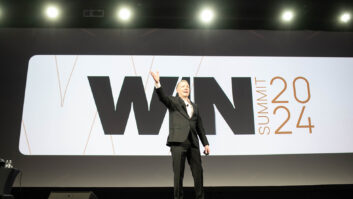Washington — Consumer groups want Congress to pay for the $4 billion that might be required to upgrade consumers’ analog TVs so they can accept digital signals.
As reported previously, Congress is considering a plan to shut down analog TV Dec. 31, 2008, but Consumers Union and the Consumer Federation of America said yesterday that Congress should pay to provide free boxes for all 80 million sets. At $50 a pop, the price tag would be $4 billion. Some in Congress want to use proceeds from analog-TV-spectrum auctions to fund the boxes.
According to a report by Multichannel News, a sister publication of TWICE at Reed Business Information, Gene Kimmelman, public-policy director for Consumers Union, was quoted as saying, “Consumers will already have to bear the inconvenience of acquiring new equipment to keep their otherwise perfectly good TVs working. They shouldn’t also have to fork over $50 per set,” he added. “Since Congress is expected to raise more than $10 billion from the spectrum auction, why shouldn’t that money first be used to help consumers with the cost of keeping their TVs working? The first rule Congress must abide by is: Do no harm to consumers.” Congress has been considering legislation to do just that.
The two groups issued a report showing that 42 million households — 39 percent of all TV-viewing households— have 80 million analog-TV sets that rely exclusively on free, over-the-air broadcasting.
The report found that the 16 million households that do not subscribe to cable or satellite have 35 million analog-TV sets, while cable and satellite homes combined have 45 million TV sets not connected to either pay service, according to the Multichannel News report.
The Consumer Electronics Association’s (CEA) technology policy VP Michael Petricone responded by saying that the study issued by the Consumers Union and the Consumer Federation of America “inexplicably neglect to ask consumers the key question facing policymakers:How many sets in U.S. households solely rely on an antenna to receive television programming. The survey appears to assume that any TV not connected to cable or satellite is connected to a broadcast antenna.”
Petricone added, “In fact, as our most recent (May 2005) survey found, a minimum of 31 million sets are not connected to broadcast antennas and are used exclusively for video games, DVDs or other purposes. For this reason, the CU and CFA survey appears to significantly overstate the number of televisions used to view [over the air] broadcasting.”
He added, “The facts are clear:Fewer and fewer consumers rely on OTA to receive television programming. The actual survey questions and results are important because they indicate the potential taxpayer cost of proposed programs to minimize the viewer impact of the analog cutoff. We are glad to provide CEA’s complete survey documents and offer to further analyze the data in any way that assists Congress in developing proposals to minimize viewer impact.”













